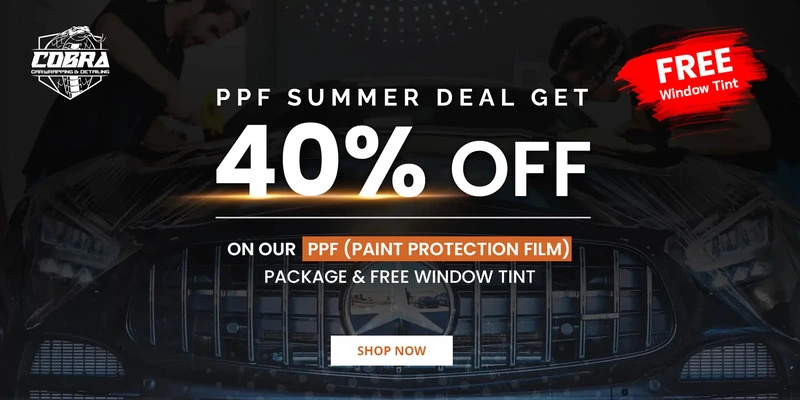ADDRESS
Shed No. 10
20 10C Street – Ras Al Khor
Industrial Area – Ras Al Khor Industrial Area 1 – Dubai
Keep Your Car Looking Flawless with Paint Protection Film! Your vehicle’s exterior is the first thing people notice. Swirl marks, chips, scrapes, and fading paint can make even a new car look worn. Paint protection film (PPF) is the solution to maintain a showroom shine for years.
PPF forms an invisible barrier over your car’s paint to guard against damage from road debris, brushes at the car wash, environmental contaminants, and UV exposure. Think of it like skin protection from the elements but for your car’s exterior.
How Paint Protection Film (PPF) Works
PPF is a durable thermoplastic urethane film that bonds to your vehicle’s paint. Quality PPF wraps range from 4 to 15 mils thick, depending on the desired protection level:
- 4mil films guard against scratches and debris
- 8mil protects from chips and cracks
- 12+mil shields from heavy scrapes and minor impacts
When installed by our professionals with great detailing, the film is nearly invisible and has a high gloss, glass-like finish. PPF is self-healing, meaning minor scratches can disappear when heated as the film reverts to its original smooth form.
Ppf on Car Vs. Waxes and Ceramic Coatings
While waxes and ceramic spray sealants offer decent paint protection, they simply cannot match the durability and self-healing abilities of professional paint protection film applications. Here is an overview of how they compare:
| Paint Protection Film | Waxes | Ceramic Sprays | |
| Installation Method | Thermoplastic urethane film bonded to paint | Liquid coatings hand hand-applied | Liquid spray coating |
| Typical Protection Duration | 5-10 years | 1-3 months | Up to 2 years |
| Protection Level | Complete shield against chips, scratches, oxidation | Minimal defense against minor scratches | Moderate shielding against light scratches |
| Self-Healing Qualities | Yes, small scratches disappear | No | No |
| Added Benefits | Extreme shine & gloss; easier maintenance | Quick DIY use; temporary shine boost | Better water beading; easier washing |
When it comes to protecting your vehicle’s valuable paint job, not all solutions are created equal. You may need a thorough car wash before waxing or ceramic sprays. Waxes and ceramic sprays may be better than letting your bare paint face the elements alone, but they ultimately provide only limited defense compared to professional paint protection film.
Installation Differences
Getting true long-term durability requires a coating that bonds to your exterior versus just sitting on the surface. Paint protection films are meticulously applied directly onto the car paint itself. They actually fuse with the clear coat to become a seamless extension for years rather than weeks or months.
Spray sealants, by comparison, have very little bonding power. They form a temporary shield based mostly on their nano properties to repel liquids. But the same water beading and self-cleaning benefits also provide marginal scratch and mar performance.
Car Protection Film Offers Real Scratch Prevention
Stopping debris and brushes requires genuine barrier protection. With enough force or friction, waxes provide negligible resistance against etching, swirls, and chips. Ceramic coats offer modest durability gains but still wear away from abrasion rather quickly.
The thermoplastic material and thickness of quality PPF give unrivaled shielding. Its elasticity helps absorb impacts rather than transmitting them directly to car paint. Even better, the film can stretch and revert to its original shape to self-heal from damage. Our team focuses on thorough car painting details to ensure everything goes smoothly.
What Does Paint Protection Film Protect Against
- Rock chips and cracks from road debris
- Light scratches from automated car washes
- Environmental damage like bird waste or tree sap
- UV exposure causing oxidation, fading, and yellowing over time
PPF is as important as car branding. PPF shields your paint from these threats better than any wax or ceramic coating, keeping vehicles looking pristine for longer.
Rock Chips and Cracks
Even a single small stone flung up by a passing tire can cause surprising destruction if it strikes your paint at speed. The force chips away the clear coat and top layer of color underneath, leaving an unsightly divot and vulnerability to further corrosion.
PPF stops this damage in its tracks by absorbing and deflecting the energy from debris. Its durable film stretches and rebounds where bare paint would fracture on impact. Stopping chips preserves your original factory paint for better resale value.
Light Scratches
Frequent automatic car washes with their brushes and material trapped in wheel wells can leave surface scratches that rob paint of its luster. Over time, these swirl marks degrade into permanent spiderwebs of damage without a protective barrier.
Thermoplastic urethane films have exceptional scratch resistance compared to single-stage paints. Their glossy surface stays smooth to withstand bumps and friction. Any light scratches tend to self-heal on quality films with a simple reheating process.
Environmental Damage
Bird droppings, tree sap, and chemical fallout from urban pollution cause irremovable etching when left on paint too long. These contaminants bore through clear coats and stain base paint layers. Attempting removal via polishing grinds away more finish.
But PPF acts as an impenetrable shield against etching. Liquids and debris wash off easily without ever contacting the vulnerable paint underneath. Far less cleaning is required to maintain a flawless look year after year.
Oxidation from UV Exposure
The sun’s rays gradually degrade exterior surfaces. You can see this clearly on faded plastic trim pieces over time. But UV damage also breaks down clear coatings, making paint increasingly chalky and porous decade by decade. Quality films have UV inhibitors that reflect sunlight. They leave your original color vibrant and block these aging effects almost completely.
What Areas of a Vehicle Need Paint Protection Film
Not all exterior surfaces face the same level of risks from road debris, car washes, weather, and general wear-and-tear while driving. Strategically installing paint protection film on only the most vulnerable zones makes it an affordable protection strategy.
Front Clip Protection
The front-facing surfaces – hood, bumper, fenders, mirrors, and headlights – take the biggest beatings from stone chips, bugs, and frontal crashes when parking. Focusing vinyl film coverage here blocks a majority of paint damage prone areas.
Rocker Panels & Side Protection
The lower door edges, behind rear wheels, and rocker panel surfaces see plenty of scrapes from flared jeans and kicks exiting the vehicle. Shopping cart nicks in parking lots also frequently plague rockers and doors. Extending coverage to these mid-body hot zones greatly reduces visible scratches and scuffs.
Full Exterior Vehicle Wraps
A full-body paint protection wrap is the ultimate shield for those wanting 360-degree assurance against all types of roadway hazards and car wash risks. The entire exterior gets coated in durable vinyl film for unprecedented preservation.
How Long Does Paint Protection Film Last
If installed properly and you take good care of it, it can last 5 to 10 years. But, if you live in an extreme climate or don’t maintain your car well, it might only last for a while. However, if it does wear out, you can always remove it and put on a new layer of protection.
Why Invest in Auto Paint Protection
- Saves money
- Maintains higher resale value
- Long warranty periods
For most vehicles, the cost of application pays for itself by avoiding scratches, chips, peeling clearcoat, and oxidation over years of use.
What If Paint Protection Film Gets Damaged
A major advantage over paint sealants is that PPF can be repaired when damaged. We patch areas rather than needing a full replacement. Heat helps the film smooth itself out to self-heal for minor scratches and scuffs. But bigger damage requires a replacement application earlier than the expected 5-10 years.
FAQs
Does auto paint protection film leave visible seams on the car body
When professionally installed, quality auto paint protection films appear seamless on body panels. Materials are produced based on car make/model specs to blend perfectly across edges. This delivers an invisible layer of protection that maintains original design aesthetics.
Can I get a cheap PPF Coating near me
Always prioritize quality materials and certified installers over the lowest cost with permanent PPF near me applications. Using cheap vinyl products that don’t stick well and have low-quality corners can result in bubbles, lifting, and a shorter lifespan. Spending money on professional shops that use high-quality products to protect your car’s paint job for many years is best.
How many years does paint protection film last in hot, sunny climates
Quality urethane films hold remarkably well even in extreme desert heat, intense sun exposure, and winter temperature swings. Though longevity depends on materials, most offer 5+ years of car paint protection in harsh climates. High-end films boast warranties guaranteeing 8-10 years in any weather conditions.
Does car paint protection film make washing or maintenance easier
Car paint protection means exterior surfaces resist staining, release debris easier at the wash, and stay glossier from self-healing properties within the film. Maintenance becomes simpler, avoiding constant waxing/sealing. You just need pH-balanced soap wash to keep your car gleaming.
Can I swap paint protection film brands when the car needs reapplication
Ppf coatings can certainly change between manufacturers during removal/replacement cycles. This allows shop selection based on the latest film tech innovations or updated warranty offerings on new applications. Certified installers have expertise across all major vinyl brands.
Does auto paint protection film protect against acid rain damage
Quality auto paint protection shields paint against most types of environmental damage. Vinyl films have properties that resist chemical etching and staining – even from polluted precipitation. Damage happens at the removable protective layer instead of the precious factory paint underneath.
Can I install PPF myself
DIY paint protection kits are available, but it’s widely advised to have pro installation for flawless results and warranties. The precision volume cutting, clay barring preparation, and experience with curves/angles make a massive difference. Like window tinting, this is not a DIY job.

